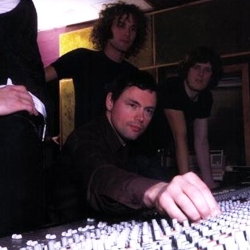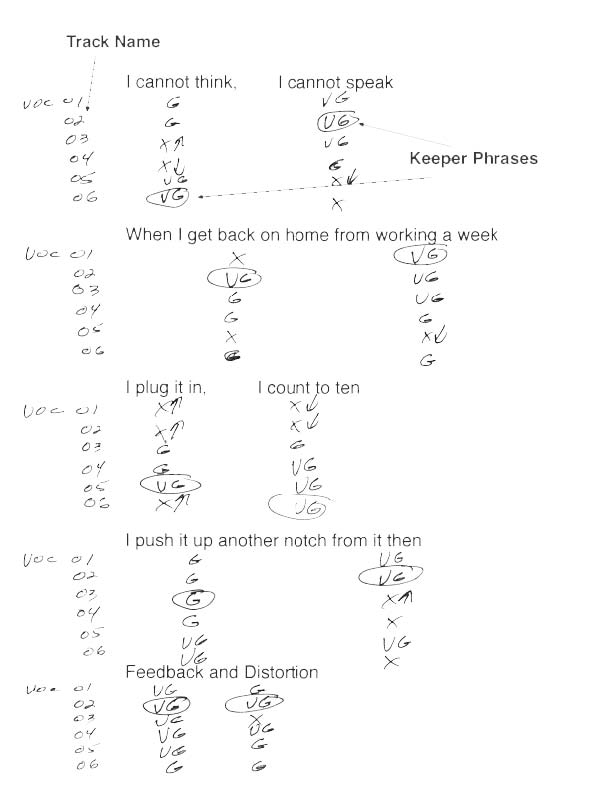
Instrument Doubling and Stacking
Instruments can be doubled or stacked the same way that vocals can, and while using the exact same performance twice (doubling) can sound pretty good, you soon reach the point of diminishing returns unless you change something up to make it sound different.
A different mic, mic preamp, room to record in, or distance from the mic will all help to make the sound bigger on subsequent overdubs.
For guitar, using two different guitars (a Les Paul and a Strat, for instance) and two different amplifiers (a Fender and a Marshall is the classic combination), combined with different pickup settings, will allow a multitude of guitar tracks to live together more effectively in the mix.
Many times you’ll find that fewer overdubs are needed if each guitar overdub has a distinctly different sound.
Vocal Comping
One of the best techniques for obtaining a great vocal is to compile a master vocal track by using bits and pieces from a number of previous passes.
This is known as “comping” and has become a standard method of obtaining a great take of just about any part.
Comping is also a method preferred by a great number of vocalists, since it makes their job fairly easy.
After the vocalist warms up, have her sing her part at least three times (the more the better, since you have more choices later), and then send her home. It’s now up to you and your engineer to comp a master track together.
- When we do vocal day, we’re talking about upwards of 20 to 23 passes per song so it takes a long time to put a song like that together. What you get with that many passes is the perfect pass.
Tips for Comping
While you can comp a track from only two passes, the more passes the better—up to a point, that is. Using too many passes can get confusing and take too much time to sort through.
The ideal number of passes is four or five, although many producers will have the vocalist sing the song until he or she gets it almost perfectly before they move on to additional passes for comping.
Regardless of how many passes are made and what the quality of the performances are, if you take good notes during each pass, you’ll find that your comp can be finished in no time.
Make no mistake about it, note taking is the key to this process, and it’s best done while each vocal pass is being recorded rather than during playback later.
While it’s possible to comp individual words or even syllables, comping by phrase is the easiest. Here’s how to do it.
1. Get a copy of the lyrics. Make sure that the song is divided into clear phrases.
2. As the vocalist sings, make the appropriate following marks after every phrase:
“↑” for sharp, “↓” for flat, “G” for good, “VG” for very good, “X” for bad, “?” for if you can’t decide
3. Create a line that’s numbered “1” for “first pass” and make your marks on that line. Do the same for each pass.
4. After each phrase that the vocalist sings, place a mark underneath it (see Fig. 4) to indicate your rating.
By the end of the vocalist’s last pass, you’ll have a pretty good idea of which phrases are the keepers.
You’ll also have an idea of which phrases don’t have an acceptable take, and you can ask the vocalist to just give you that line until you have what you need.

